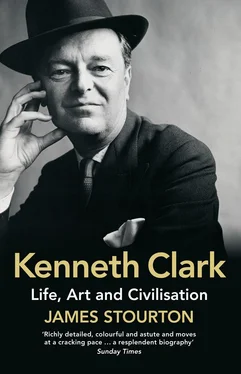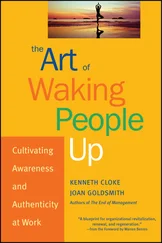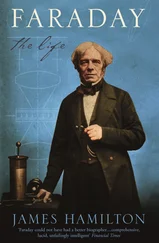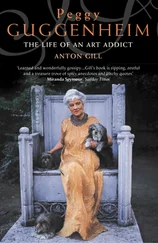‘Family history has very little charm for me,’ Clark told his biographer. ‘I find I always skip the first ten pages of a biography.’5 He dismissed his own in about five lines. But the Clark family story in Paisley was very remarkable. Paisley, today a suburb of Glasgow, was effectively a company town of the cotton industry, and was dominated by the Clark family. After Clark’s great-great-great-great-grandfather William Clark, a farmer at Dykebar, died in 1753, his widow had moved with her children to nearby Paisley, where her son James (1747–1829) started a business as a weaver’s furnisher and heddle twine manufacturer. The shortages of imports arising from the Napoleonic blockade stimulated the development of a new English cotton that was as smooth as silk, and Clark’s son, another James (1783–1865), laid the foundations of the family fortune with the invention of the cotton spool. With his brothers he built the enormous factory that established Paisley as a world leader in manufacturing cotton thread. Paisley grew into a town of consequence, with grand public buildings presented by the Clarks and their commercial rivals, the Coats family: the town hall (Clark), infirmary (Clark), and art gallery and library (Coats) as well as schools and churches. By what Kenneth described as ‘the not very exacting standards of the time’ the Clarks were conscientious employers, and their philanthropy probably conditioned his belief that humanitarianism was the greatest discovery of the nineteenth century.6
In 1896 the family sold out to J&P Coats for the enormous sum of £2,585,913 (about £2.5 billion today). This fortune was divided between four family members, including Kenneth Mackenzie Clark (1868–1932), who was to become the father of Kenneth. Clark senior had been brought up in Paisley, and left school in Greenock at fourteen; according to his son he had a very good brain, although it was untrained and undisciplined. He was sent to Australia and New Zealand, and adored both, and on his return at the age of twenty-two he took up a position as a director of the family business. After two years it became evident that his love of sport and the bottle was distracting him; he was effectively sacked, and from that moment onwards devoted himself entirely to pleasure. His main occupation became building and racing yachts on the Clyde, naming three of them Katoomba , after the chief town of the Blue Mountains in New South Wales (his racing yacht was named Kariad ). The family, as his son later explained, ‘were big frogs in the small pool of Clyde yacht racing’. All through his life, Clark senior never cut his links with Paisley, and was always generous with charitable subscriptions: he was fondly remembered as the ‘news-boys’ friend’, providing them with an annual outing and dinner.7 He also never lost his Ayrshire accent.
Clark paints a rollicking portrait of his father as an independent-minded, self-indulgent ‘roaring boy’. Attracted to women, he drank too much and delayed marriage until the age of thirty-five, when his choice fell upon Alice McArthur, a puritanical cousin who made it her unsuccessful mission to save him from his alcoholic excesses. Before she married, Alice had been living with her Quaker mother in Godalming, ‘so different to the rowdy boozy world of Clyde yacht racing’.8 ‘Two more different people than my father and mother can hardly be imagined. He was convivial, natural, totally unself-conscious; she was shy, inhibited, and prone to self-deception. They were united by two qualities, intelligence and a total absence of snobbery.’9
Clark’s father was a big man with a drooping moustache, who was burdened by no inhibitions and knew no boundaries. Clark was fond of his father but alarmed by him, and embarrassed by his drunkenness and bad behaviour. He found his mother by contrast cold and sharp, although he was aware that he had painted a particularly unfeeling portrait of her in his autobiography: ‘I have been worried that the allusions to her in Vol 1 were incomplete. Her life was ruined by being in the wrong box. At the end of her life she reverted to being a shrewd, frugal Quakerish lady, living in a bedsitter. That suited her much better than [the family’s Suffolk home] Sudbourne, and she became quite peaceful.’10 He claimed that she never held him as a child, which several photographs show to be untrue. She remains, however, a shadowy and rather mournful figure who only came into her own as a grandmother. Unfortunately, no letters survive from her until her son was eighteen – by which time she had belatedly discovered his genius.
‘Like so many remarkable men he was the only son of two entirely opposite and incompatible parents,’ Clark wrote in his obituary of Cyril Connolly, and he certainly saw himself in these terms.11 Yet despite everything, his parents made a successful marriage, and remained devoted to each other. Theirs was an extraordinarily peripatetic existence. The Edwardian era is often portrayed as an earthly paradise for the rich, and no doubt it was to those who welcomed an uninterrupted social life. The Clarks, however, had no social ambitions, and were too eccentric to belong with comfort to any fixed society. They adopted the conventional habit of the rich and moved from house to house, but for them it was a stratagem to avoid rather than to meet polite society. Alice Clark found herself mistress of a house in Grosvenor Square, a large rented house in Perthshire, an even larger house and estate in Suffolk, two yachts, and soon an additional house at Cap Martin in the south of France. Their life became a progress dictated by the sporting calendar, but to the young Clark ‘my home was Sudbourne Hall, about a mile from Orford in Suffolk’.12 One remarkable aspect of Clark’s childhood is how very well documented it was by good photographs. His father employed a professional photographer to take numerous pictures of all aspects of their life – Sudbourne Hall, the yachts, the shooting parties, and young Kenneth in many poses and costumes. All these are preserved at Saltwood, and suggest that Clark’s parents were not as indifferent as he maintained.
Named after his grandfather, Kenneth McKenzie Clark was born at 32 Grosvenor Square in London on 13 July 1903. He was delivered by Caesarean section, which in those days meant that he would remain an only child. A year later his father acquired the eleven-thousand-acre Sudbourne estate for £237,500, with a mortgage of £75,000.13 From what followed we may deduce that the purchase was made with his son in mind, and the expectation that the boy would grow up to enjoy the pleasures of a rich man’s sporting estate. This was in fact as far as Clark senior’s dynastic ambitions would ever go: Kenneth once came into his father’s study at Sudbourne and found two men in black coats and striped trousers offering Clark senior the chance to buy a peerage – one of them was the notorious Maundy Gregory, Lloyd George’s chief agent in the sale of honours – ‘Wouldn’t you like this little chap to succeed you?’ The response was ‘Go to hell,’ and the men drove off.14 This encounter also tells us that the Clarks were in all probability supporters of the Liberal Party.
Even by expansive Edwardian standards the Sudbourne estate was large; it included a model farm and several well-ordered villages. The house was elegant but rather stark, ‘one of Wyatt’s typical East Anglian jobs, a large square brick box, with a frigid, neo-classical interior’.15 It was built in 1784 for the first Marquess of Hertford, and had devolved on his colourful descendants, the triumvirate of art collectors who created the Wallace Collection. The eponymous Richard Wallace, the illegitimate Hertford heir, mainly used Sudbourne for its shooting, and on one occasion entertained the Prince of Wales, the future King Edward VII, there. Clark senior bought the estate in 1904 for the shooting, but found the house cold and uncomfortable, and consequently ordered a makeover. He and Alice went abroad, and returned to their newly minted ‘Jacobethan’ interior in richly carved walnut, which was probably a more suitable setting for their furnishings and paintings. Young Kenneth thought it was all in very poor taste, although he found the renovations more friendly than Wyatt’s original interiors.
Читать дальше












